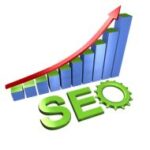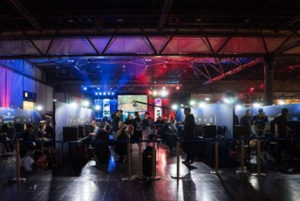What to look for in a lifecycle marketing agency

For businesses that sell products or services, lifecycle marketing should already be a part of their digital repertoire. If not, they’re missing out on a whole world of opportunity, especially as the traditional sales funnel model – flyers, newspapers, billboards, magazines, and TV – becomes more and more obsolete. With so many advancements in technology and digital platforms, these traditional forms of advertising no longer accommodate the many ways consumers interact with businesses and shops. Not as well as Facebook pages, Instagram stories, TikTok videos, and sponsored online ads do. There are so many more options to choose from, and there is so much information available within seconds that consumers are more knowledgeable and more hyper-aware of their purchases than ever before. This is exactly where a Lifecycle Marketing Agency comes in – their teams understand the lifestyle and digital dependency of mobile users, helping bring businesses into the 21st century with the most up-to-date strategies for connecting with and retaining new clients.
What is Lifecycle Marketing?
Because of the worldwide digital dependencies people have developed, a Lifecycle Marketing Agency focuses on appealing to the lifestyles of mobile users. Rather than focusing on separate campaigns, they analyze the entirety of a customer’s journey to build better relationships with them in order to turn them into a committed, repeat buyer. This is no easy task as modern buyers are not nearly as predictable as previous generations.
The Three New Buyers
There is an entire generation of people who don’t know what it’s like to grow up without a smartphone. The ability to simply reach into their pockets and pull out a handheld computer that al-lows them to learn, do, or buy things whenever and wherever they want has led to a whole new de-mographic of shoppers. A Lifecycle Marketing Agency understands who these buyers are and what they want.
1. The Well-Advised consumer is the consumer who wants to make purchases based on their ethics and morals, rather than on price point or branding. In order to sell to this buyer, a busi-ness must be able to tap into their conscience and connect with them on a deeper level. It isn’t enough to just make them aware of a product; they also need to inform them about why this product is unique, sustainable, and worthy of their money. A Lifecycle Marketing Agency has the know-how to go deeper than surface-level copy, appealing to the values and belief sys-tems of the well-advised shopper.
2. The Right-Here consumer expects all mobile experiences to tailor to them and what they want and need right here, right now. They are not interested in paying for shipping fees or in waiting weeks for a product to arrive. A Lifecycle Marketing Agency understands that these are the types of buyers to google “near me” when searching for what they want.
3. The Right-Now shopper wants the most convenient shopping experience possible, regardless of time and location. Appealing to this shopper requires flexibility and on-demand service, which a Lifecycle Marketing Agency can help any business provide.
The Framework of Lifecycle Marketing
A Lifecycle Marketing Agency is focused on providing customers with the kind of marketing and com-munication they actually want rather than blasting thousands of imboxes with the same emails and promo codes. After all, does every customer on a mailing list really want the same products? Do they all live in the same location? In order to connect with customers in an organic and personal way, in a market that is saturated with similar content, a Lifecycle Marketing Agency needs to gain a genuine understanding of who this audience is. This requires a lot of trial and error, but the result is a stream-lined marketing process that is efficient and effective in getting results. This framework includes three key factors:
1. The Attract Phase: the first step of lifecycle marketing is getting the attention of prospective customers. In order to do this, a Lifecycle Marketing Agency must first target this audience with content that will spark their interest, so much so that they give their information over to a business by signing up for an email or creating a customer account.
2. The Sell Phase: once a Lifecycle Marketing Agency has gained a customer’s attention, they will need to move on to the sell phase. In order to properly execute this phase, a business must understand their key audiences so they can reach out and share more about their products and services. As mentioned above, not every buyer reacts to the same information in the same way. Some prefer an alluring deal while others want to know more about manufacturing. It’s important to know when to offer which so that a sales pitch can be made.
3. The Wow Phase: this is the most critical phase for a Lifecycle Marketing Agency. Once a sales pitch and transaction have been completed, it’s time to work diligently to retain this customer and turn them into a repeat buyer. How is this done? Through thoughtful incentives, valuable (and free) information, exceptional content, and tailored offers.



